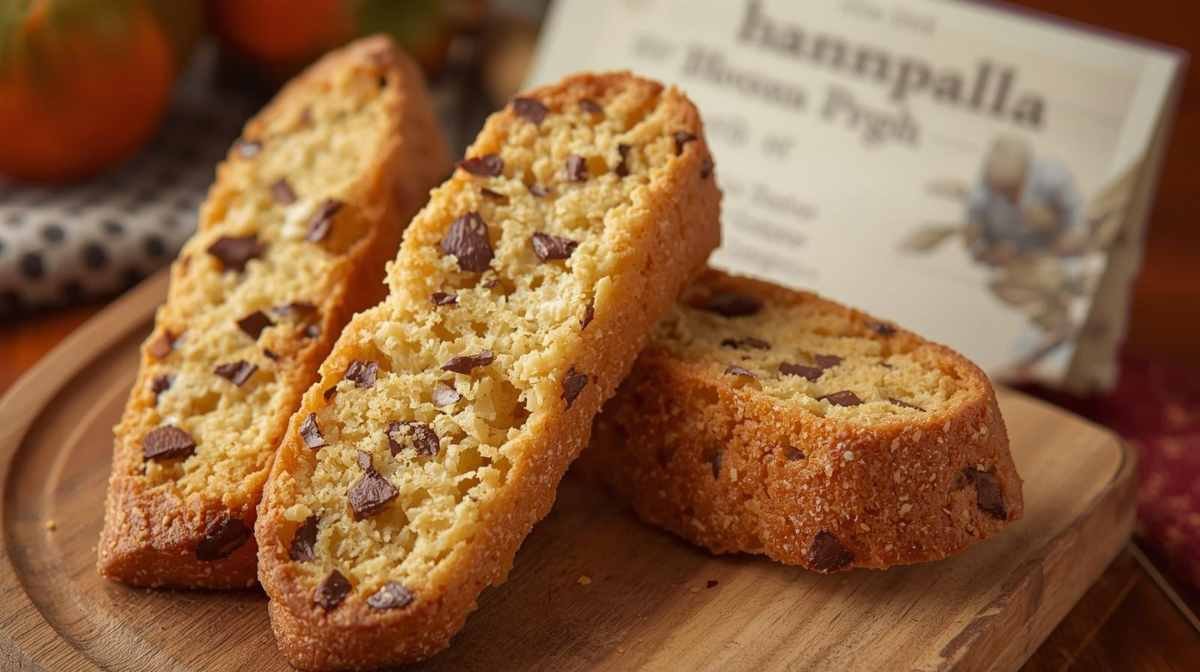Contents
- 1 Introduction: More Than Just a Biscuit
- 2 What is бишкоти ди прато?
- 3 🥠 Бишкоти ди Прато (Tuscan Almond Biscotti) Recipe
- 4 🧂 Ingredients
- 5 Origin and Deeper Philosophy
- 6 Applications in Modern Sectors
- 7 Comparison: бишкоти ди прато vs Traditional Models
- 8 Future Implications: Ethics, Risks, and Opportunities
- 9 Best Practices: Designing for бишкоти ди прато Thinking
- 10 The Broader Lesson: How бишкоти ди прато Shapes Modern Thinking
- 11 The Human Connection
- 12 Conclusion: Bake Your Ideas Twice
- 13 5 Simple FAQs
Introduction: More Than Just a Biscuit
At first glance, бишкоти ди прато looks like a simple cookie. But beneath its crunchy surface lies a powerful metaphor for innovation, balance, and transformation.
Just like a great idea, this biscuit is baked twice. The first bake forms it; the second makes it last forever. This “double baking” is not only a culinary method — it’s a philosophy of refinement, resilience, and pure design.
In this article, we’ll explore what бишкоти ди прато truly is, its origin, how it connects to design, business, technology, and education, and how we can learn from its simplicity. We’ll end with a 5-question FAQ to tie everything together.
What is бишкоти ди прато?
бишкоти ди прато (Italian: Biscotti di Prato) are traditional Tuscan almond biscuits known for their dry, crisp texture and sweet flavor. They are baked twice — a unique process that gives them long shelf life and intense taste.
Key Features:
- Double-baked: The dough is baked once, sliced, and baked again for perfect crunch.
- Simple ingredients: Flour, sugar, eggs, and whole almonds — no butter or oil.
- Long-lasting: They can be stored for weeks without losing freshness.
- Classic serving style: Traditionally enjoyed with sweet dessert wine (Vin Santo) or coffee.
The word biscotti comes from the Latin biscoctus, meaning “twice baked.” In Tuscany, бишкоти ди прато are not just snacks — they are symbols of discipline, patience, and timeless taste.
🥠 Бишкоти ди Прато (Tuscan Almond Biscotti) Recipe
Prep Time: 15 minutes
Cook Time: 35–40 minutes
Cooling Time: 15 minutes
Total Time: ~1 hour
Servings: 20–24 cookies
🧂 Ingredients
| Ingredient | Quantity |
|---|---|
| All-purpose flour | 2 cups (250 g) |
| Sugar | 3/4 cup (150 g) |
| Whole almonds (unpeeled, toasted optional) | 1 cup (150 g) |
| Eggs | 2 large |
| Baking powder | 1 teaspoon |
| Vanilla extract | 1 teaspoon |
| Lemon zest (optional, for aroma) | 1 teaspoon |
| A pinch of salt | – |
Origin and Deeper Philosophy
Historical Roots
бишкоти ди прато were born in medieval Tuscany, where bakers discovered that double baking preserved food for longer journeys and harsh conditions. Over time, the technique became an art form.
In the 19th century, Antonio Mattei from the city of Prato perfected and popularized the recipe. His version is still considered the authentic standard, made with no fats — only pure, natural ingredients.
Today, Mattei’s bakery in Prato is a living museum of tradition, where every biscuit tells a story of craftsmanship, patience, and heritage.
Philosophical Meaning: The Art of Double Baking
The process of making бишкоти ди прато mirrors the process of refining ideas:
- First baking: Shaping raw thoughts, experimenting, exploring possibilities.
- Cooling and slicing: Reflecting, analyzing, breaking down into pieces.
- Second baking: Removing excess — polishing ideas into lasting form.
It’s a perfect metaphor for life, creativity, and innovation. Great designs, like great biscuits, are not made in one step. They evolve through shaping, cutting, and perfecting — until only the essence remains.
Applications in Modern Sectors
1. Artificial Intelligence and Technology
In AI development, we “train” large models (first bake), then fine-tune and simplify them (second bake). This mirrors бишкоти ди прато — a process of refining raw data into intelligent, usable systems.
Like a biscotti that’s baked twice for durability, a well-trained AI must go through cycles of testing and optimization to become stable, interpretable, and efficient.
The lesson: Don’t rush to ship. Let your ideas “bake twice” for quality and endurance.
2. Business and Product Design
In business, the бишкоти ди прато mindset means simplicity and strength.
- Minimalism: Focus on core features that matter.
- Longevity: Build products that age well, not those that trend briefly.
- Authenticity: Stay true to your core recipe, even as you evolve.
Successful brands work like master bakers — they refine, simplify, and keep only what is necessary. The second bake is where brands remove fluff and rediscover their identity.
3. Society and Culture
Societies can also “bake twice.” The first bake is culture creation — art, language, habits. The second bake is reflection — filtering what truly defines identity.
In an age of fast trends, бишкоти ди прато reminds us to preserve authenticity. To slow down. To protect what is real, even when everything else changes.
This biscuit teaches us that identity is not built overnight. It’s formed through repetition, revision, and re-commitment to our essence.
4. Design and Architecture
Designers can learn from бишкоти ди прато:
- Form follows essence: No decoration without purpose.
- Structure through refinement: First sketch freely, then refine ruthlessly.
- Durable beauty: Like biscotti, the best designs are simple yet timeless.
The “double bake” design principle encourages iteration — build, test, refine. Good design, like good baking, happens in layers of patience.
5. Education and Learning
Learning, too, is a kind of double baking.
- First phase: Absorb knowledge — the raw bake.
- Second phase: Reflect, question, apply — the refinement bake.
Teachers and learners who apply the бишкоти ди прато philosophy produce deeper understanding, not just surface-level memorization.
True education is not about stuffing information — it’s about reworking ideas until they stick.

Comparison: бишкоти ди прато vs Traditional Models
| Aspect | бишкоти ди прато Approach | Traditional/Protocol Approach |
|---|---|---|
| Process | Two-step: shape, then refine | One-step: quick delivery |
| Goal | Essence and longevity | Speed and expansion |
| Outcome | Durable, timeless result | Temporary, fragile results |
| Philosophy | Less is more | More is better |
| Method | Remove excess | Add layers |
| Symbolism | Clarity, patience, discipline | Complexity, noise, confusion |
бишкоти ди прато stands as a quiet rebellion against overproduction and overload. It celebrates the beauty of restraint — the wisdom of removing, not adding.
Future Implications: Ethics, Risks, and Opportunities
Opportunities
- Designing for durability: Products and systems that last decades.
- Cultural sustainability: Preserving traditions that evolve slowly, not vanish fast.
- Digital minimalism: Software that values clarity over clutter.
- Transparency in creation: Showing the “recipe” behind your process builds trust.
Ethical Challenges
- False authenticity: Brands may pretend to be “artisanal” without real value.
- Cultural elitism: “Pure” traditions might exclude innovation or diversity.
- Over-refinement: Too much simplicity can strip away human warmth.
- Resource use: Even in tradition, sustainability must be respected.
Risks
If everything becomes “perfectly baked,” we may lose spontaneity. Innovation needs room for imperfection. The бишкоти ди прато model reminds us to refine — but not sterilize — creativity.
Best Practices: Designing for бишкоти ди прато Thinking
- Start with a pure base.
Begin your idea or product with simple, meaningful ingredients. - Pause between phases.
Allow cooling — reflection before the next step. - Refine through removal.
Edit, simplify, and eliminate until only essentials remain. - Add authentic “almonds.”
Unique elements should enhance, not distract from, your foundation. - Test for time.
Will your creation hold up over months or years? If not, rebake it. - Tell your story.
Share how your process evolved. People trust transparent creators. - Embrace imperfection.
Slight cracks make each biscuit unique — and so do human flaws.
The Broader Lesson: How бишкоти ди прато Shapes Modern Thinking
In our hyper-speed world, everything is built for instant results. But бишкоти ди прато reminds us that greatness takes time — and a second bake.
Whether you’re coding an app, designing a brand, or writing a book, the rule is the same: make it once, then make it better.
Like the baker in Prato, who repeats the same ritual every day, we must learn to trust the process — the quiet art of repetition and refinement. That’s how we turn ideas into heritage.
The Human Connection
Why does a simple biscuit carry such deep meaning? Because it connects the physical and the philosophical.
When you bite into бишкоти ди прато, you taste patience, balance, and focus. It’s a reminder that the most meaningful creations — in food, art, or life — come from steady hands and thoughtful hearts.
This humble dessert becomes a mirror of our world: everything worth keeping must go through heat, time, and transformation.
Conclusion: Bake Your Ideas Twice
бишкоти ди прато teaches us that refinement is not a luxury — it’s a necessity.
We all have “dough” moments — rough, unformed, full of potential. The secret is not in what we add, but in what we remove.
The world doesn’t need more noise. It needs clarity, texture, and lasting taste.
So bake your ideas twice. Let them cool. Slice them open. And bake them again — until they’re crisp, honest, and unforgettable.
5 Simple FAQs
It means “biscuits from Prato,” a city in Tuscany, Italy.
The second bake removes moisture, giving them their signature crunch and long shelf life.
Yes. They require simple ingredients — flour, sugar, eggs, almonds — and patience for two baking rounds.
Yes and no. All biscotti are double-baked, but бишкоти ди прато refers specifically to the traditional Tuscan almond recipe.
To perfect anything — a skill, a design, or an idea — we must work, reflect, and refine. That’s the “double baking” of life.
Find the Most Recent Information at Streameasts.blog
